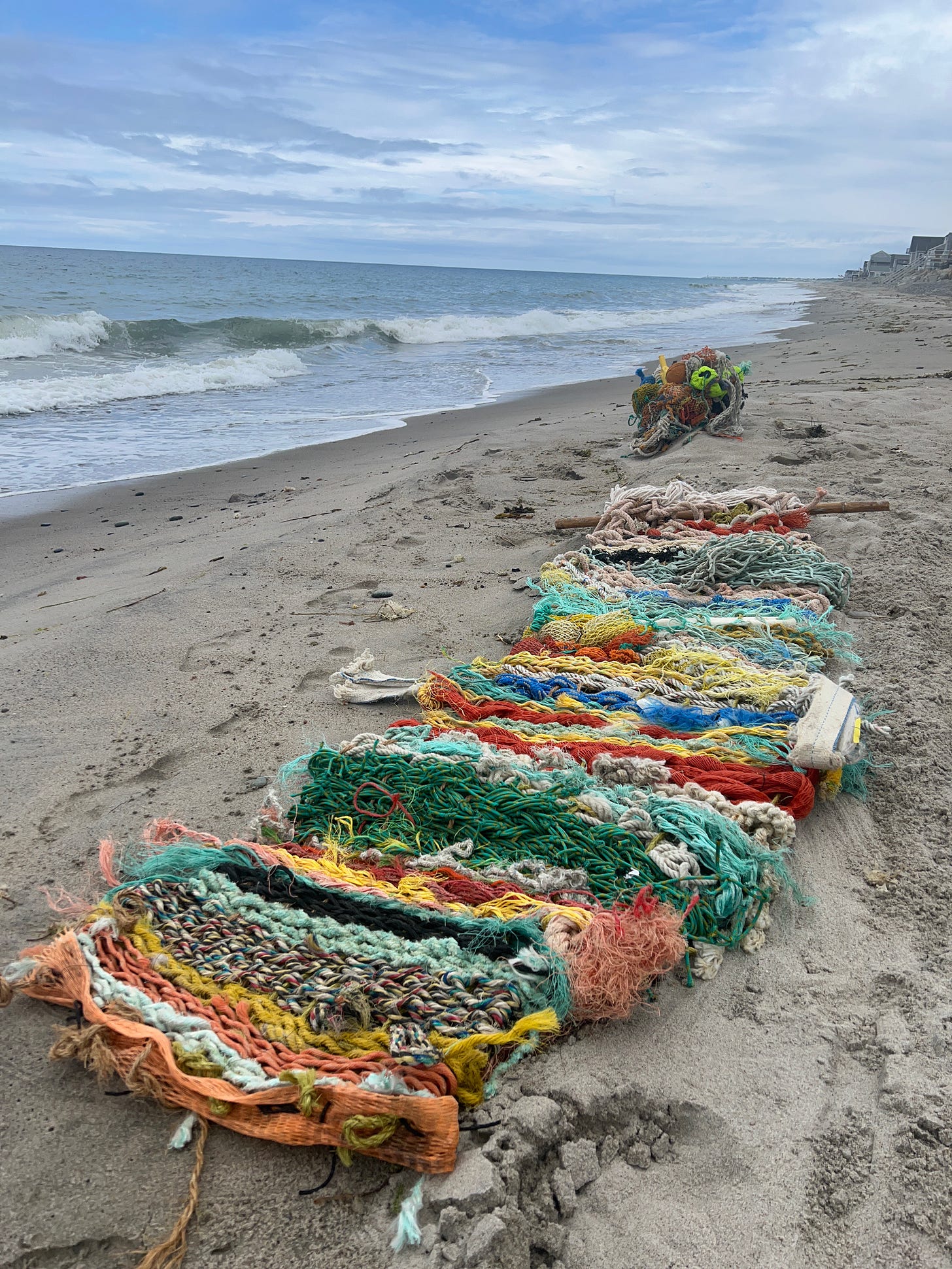
I’m a beach girl. My family had a house a mile from the beach in Rhode Island, and I swam almost every summer day, and walked in cooler weather. High tide left a ribbon parallel to the water of abandoned, beaten-up lobster traps, rope, the occasional wooden beam from what I romantically guessed was a shipwreck. But mostly, back then, it was tangles of seaweed, shells, and bits of sea life, fodder for hungry gulls. Sculptor Rebecca McGee Tuck harvests her materials along the high tide line on Humarock Beach in Scituate, Mass.
Last week, in the terrible lull between hurricanes passing through the Gulf Coast region, I thought of Rebecca’s series “The Wrack Line,” made from the items she collects. The content has changed since I was a child. Today, it’s infested with hardy, brightly colored plastics. The ocean coughs up fishing gear, trash, and microplastics onto land like someone with lung disease hacks up phlegm.
The manmade candy-colored palette turns out to be an advantage for Rebecca, who has work now in exhibitions at Readymade Gallery in Orleans, St. Botolph Club in Boston, Higgins Art Gallery at Cape Cod Community College, and the Cape Cod Museum of Art. In the works she writes about here, she applies the handcraft and pattern-making of weaving to her ropes and plastics. These pieces point out the senseless destruction of beaches and oceans while at the same time looping and tightening the material into its own kind of uncanny sense: Totemic, protective, beautiful.
Rebecca can’t preserve the fragile ecosystem from the damage we’ve done, causing infected and fevered oceans. But she does her part each day, walking the beach, clearing the litter, turning it into art. I believe this type of ritualized art practice does have an impact, and not just because the scrappy elegance of her sculptures brings public awareness to the problem. Loving attention opens doors we can never anticipate. The presence and consciousness Rebecca brings to the beach and to her art-making are seeds for restoration – whether or not humans live to see it.
Rebecca writes:
Keep reading with a 7-day free trial
Subscribe to Ocean in a drop to keep reading this post and get 7 days of free access to the full post archives.



